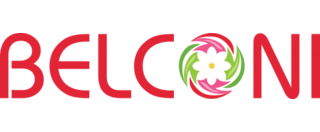Discover the ideal capital required to open a flourishing flower shop in Malaysia. Explore the essential startup costs, investment insights, and financial planning tips to set up your dream floral business. Unleash your passion for flowers and business acumen in this booming industry. Read more to make your floral dreams come true!
Introduction
Welcome to the world of flowers and entrepreneurship in Malaysia! If you have ever dreamed of immersing yourself in the enchanting realm of blooms and opening your own flower shop, you have come to the right place. In addition to sharing the beauty of nature with others, opening a flower shop can be a lucrative venture, as you will be able to build a successful business while doing so.
The purpose of this guide is to provide answers to one of the most common questions of aspiring floral entrepreneurs, which is: “How much capital is required to open a flower shop in Malaysia?” We will explore the various factors that influence startup costs, understand the investments required to create a successful flower shop and gain valuable insights into the financial planning necessary to make your dream a reality.
How much capital to open a flower shop in Malaysia?
It is an exciting and rewarding experience to open a flower shop in Malaysia. As with any business venture, it requires careful financial planning and investment. The amount of capital needed for opening a flower shop depends on several factors. In this article, we will examine the factors that influence the startup costs of a flower shop in greater detail.

- Location: Choosing the location of your flower shop plays a significant role in determining the amount of capital needed. Prime locations in busy commercial areas or popular shopping districts may have higher rental costs, but they can also attract greater numbers of customers. Alternatively, setting up shop in a less prominent area may result in lower upfront costs, but could negatively impact foot traffic and visibility.
- Shop Size and Layout: The size and layout of your flower shop will impact the initial capital needed. In order to create an attractive and functional shop for both customers and staff, it is essential to carefully consider the shop’s layout. A larger shop with a larger display area may require a higher investment in rent, furnishings, and décor.
- Inventory: A successful flower shop must have a diverse and appealing inventory of flowers and potted plants. An initial investment in inventory will vary depending on the types and quantities of flowers you wish to sell. Occasionally, it is possible to reduce costs by partnering directly with local suppliers.
- Equipment and Tools: There are a number of equipment and tools you will need in order to ensure the smooth operation of your floral shop. This may include refrigeration units to preserve the freshness of the flowers, display stands, vases, floral foam, wrapping materials, and a point-of-sale system.
- Staffing: It is important to consider hiring professional florists and additional staff to assist with customer service, floral arrangements, and shop management. Your initial capital should be sufficient to cover the cost of at least a few months’ payroll costs.
- Licensing and Permits: The registration of your flower shop as a legal entity and the obtaining of all the necessary business licenses and permits are essential steps. Allocate funds toward these legal requirements so you can avoid potential legal trouble in the future.
- Marketing and Promotion: During the early stages of your flower shop’s development, you will have to invest in marketing and promotion to attract customers. This may involve the creation of a website, the printing of business cards, flyers, and other promotional materials, as well as advertising through a variety of channels.
- Contingency Fund: In case of unexpected expenses or a slower-than-anticipated start, it is always prudent to have a contingency fund. This will enable you to deal with challenging times without putting your company at risk.
In spite of the fact that starting a flower shop can require substantial capital, careful financial planning and budgeting can help ensure the success of your business. Get a realistic estimate of startup costs from an experienced florist or business consultant based on your specific business plan and objectives by consulting with a florist or business consultant.
Business Registration and Legal Requirements
Business registration and compliance with legal requirements are essential steps to ensure your venture operates legally and smoothly. Starting a business is an exhilarating journey, but it also comes with certain legal obligations and responsibilities. To ensure your venture runs smoothly and lawfully, you need to take into consideration the following critical aspects of business registration:
1. Business Structure:
Before you can register your business, you will need to decide on its legal structure. Common options include sole proprietorships, partnerships, limited liability partnerships (LLP), private limited companies (Sdn. Bhd.), and more. Each structure has its advantages and implications in terms of liability, taxation, and ownership. Make sure you choose a structure that aligns with your business goals, and seek legal advice if needed.
2. Business Name Registration:
It is important to select a unique and appropriate name for your business, but it must also be registered to ensure that it is not already in use by another entity. You can proceed with registration after conducting a name search with the Companies Commission of Malaysia (SSM) to ensure its availability.
3. Business Registration with SSM:
Business registration in Malaysia is typically done through the Companies Commission of Malaysia (SSM). The process involves submitting the necessary documents, such as the completed registration form, identification documents of the owner(s) or director(s), and any additional requirements based on your business structure.
4. Licensing and Permits:
There are specific licenses and permits required to operate legally depending on the nature of your business. Research the relevant authorities and obtain the necessary licenses before commencing operations. This applies to a wide range of industries, including food and beverage, healthcare, education, and more.
5. Tax Registration:
A tax identification number and an understanding of your tax obligations, including corporate income tax, goods and services tax (GST), and other relevant taxes, are essential for the successful operation of your business.
6. Employment Regulations:
If your business involves the hiring of employees, you should familiarize yourself with Malaysian labor laws and regulations. These include minimum wage requirements, working hours, benefits, and employment contracts.
7. Intellectual Property Protection:
Make sure you protect your business’s intellectual property, such as trademarks, copyrights, and patents, so that you are protected from unauthorized use of your brand identity and unique creations.
8. Data Protection and Privacy:
You must comply with data protection laws and ensure the privacy of your customers’ information if your business collects and processes personal data.
9. Compliance with Local Regulations:
As well as complying with the specific legal requirements discussed above, be aware of any industry-specific regulations. This may include health and safety regulations, environmental regulations, etc.
10. Ongoing Compliance and Reporting:
Following your business’s registration and operation, you must comply with ongoing compliance requirements, which include filing annual returns, keeping proper records, and fulfilling any other legal obligations.
Sourcing Suppliers and Inventory Management
In a flower shop, sourcing suppliers and managing inventory are crucial aspects that directly affect the quality of your products and the success of the business as a whole. It is imperative that you maintain customer satisfaction and provide a diverse and fresh selection of flowers by effectively managing your inventory and establishing reliable supplier relationships. Here are the essential steps for sourcing suppliers and managing inventory effectively:

Sourcing Suppliers:
- Market Research: You should conduct thorough market research to identify potential suppliers of flowers, plants, and floral accessories. You should identify wholesalers, growers, and importers who can provide a wide range of high-quality products at competitive prices.
- Local Flower Markets: Get to know your suppliers as personally as possible by attending local flower markets and trade shows. Developing face-to-face relationships can lead to better deals and a deeper understanding of the products available.
- Online Platforms: Ensure that you are using online platforms and directories that contain information about florists and suppliers. These platforms can provide you with access to both local and international suppliers, providing more options for your inventory.
- Sample Orders: Request sample orders to evaluate the freshness and quality of the flowers provided by a supplier before committing to them. This enables you to make informed decisions regarding the quality and freshness of your flowers.
- Negotiation: Take into consideration factors such as bulk discounts, payment terms, and delivery options when negotiating prices and terms with potential suppliers.
- Reliability and Reputation: You should select suppliers who have a good history of reliability and a good reputation within the industry. Having a consistent and reliable supplier will assist you in maintaining a steady supply of fresh inventory.
Inventory Management:
- Stock Control: Keep track of your inventory levels by implementing an efficient stock control system. Regularly update the stock records and perform physical stock counts in order to avoid overstocking.
- Seasonal Demands: Prepare your inventory in accordance with seasonal demand. Anticipate peak periods, such as holidays and special occasions, to ensure that you have adequate stock on hand.
- Storage and Handling: Maintain the freshness and quality of your flowers by properly storing and handling them. Invest in refrigeration units and follow best practices when handling different types of flowers.
- First In, First Out (FIFO): To ensure freshness and to prevent wastage, arrange your floral inventory using the FIFO method. Sell the oldest stock first to ensure customers receive the freshest blooms.
- Ordering Process: Implement a streamlined ordering process with your suppliers to ensure timely replenishment of inventory. Consider establishing a schedule or using automated systems to avoid stockouts.
- Waste Management: Reduce losses from unsold or expired inventory by implementing a waste management strategy. Consider alternative uses for leftover flowers, such as creating discounted arrangements or repurposing them.
The best way to create a flourishing flower shop is to carefully source suppliers and manage your inventory effectively. You will be able to deliver fresh and beautiful blooms to customers throughout the year. By combining high-quality products with efficient inventory practices, your flower shop will be regarded as one of the most reliable and sought-after floral destinations.
Hiring and Training Staff for Your Flower Shop
If your flower shop wants to provide exceptional customer service, create beautiful floral arrangements, and ensure the smooth operation of your business, you must hire and train the right staff. Employees are the face of your flower shop and play a crucial role in creating a positive customer experience. Here are some tips for hiring and training staff to help your flower shop succeed:
Hiring Staff:
- Define Job Roles: A well-defined job description will attract qualified candidates with the right skills and qualifications. This could include florists, sales associates, delivery personnel, and administrative staff.
- Recruitment Process: The use of internet job portals, social media, and local job fairs are some of the best ways to attract potential candidates. You can also consider contacting current employees or other trusted sources for referrals.
- Interview Process: Conduct thorough interviews to determine the candidates’ skills, experience, and alignment with the values of your flower shop. Ask questions that gauge their knowledge of flowers and floral arrangements, as well as their ability to handle customer inquiries.
- Cultural Fit: Consider whether each candidate is culturally compatible with your flower shop’s values and team dynamics. Employee satisfaction and customer satisfaction can be enhanced by fostering a positive and cohesive work environment.
- Check References: It is important to verify the qualifications and work history of the candidates by checking their references, in order to gain an understanding of their past performance and reliability.
- Trial Period: You may want to consider implementing a trial period for new hires so that you may assess their performance and compatibility with your team before making a permanent commitment.
Training Staff:
- Floral Training: You can provide comprehensive training for florists and staff involved in floral arrangements. Ongoing training sessions can keep them up-to-date with the latest floral styles and trends.
- Customer Service: Provide all employees with excellent customer service training, emphasizing the importance of being friendly, attentive, and knowledgeable when providing assistance to customers.
- Product Knowledge: You should familiarize your staff with the different types of flowers and plants you offer. Knowing their unique characteristics, care instructions, and suitability for different occasions will enable your staff to guide customers in the most effective way.
- Sales and Upselling: Train your staff on effective sales techniques and upselling strategies. Encourage them to suggest other items to enhance the customer’s shopping experience, such as vases, greeting cards, and gift wrapping.
- Handling Inquiries: Your team should be trained to handle various customer inquiries, including pricing, delivery options, and custom arrangements. Building trust with customers starts with providing consistent and accurate information.
- Conflict Resolution: Make sure that your staff is trained in conflict resolution skills so they can handle any customer concerns or complaints in a timely and professional manner.
Employee Development:
- Encourage Creativity: Provide your florists with opportunities to experiment with new floral arrangements and designs, which can distinguish your flower shop from the competition.
- Recognition and Incentives: Incentives and rewards can boost motivation and loyalty among employees. Recognize and reward exceptional performance and milestones.
- Cross-Training: During busy periods or staff absences, it may be beneficial to cross-train employees in different areas of the flower shop.
- Continued Learning: Encourage your staff to grow professionally and personally by hosting workshops, seminars, and industry events. Continued learning will enhance the expertise and passion of your florist staff.
You can enhance the overall customer experience in your flower shop by hiring and training the right staff. In addition to attracting loyal customers, your flower shop will develop a reputation for exceptional service and breathtaking floral arrangements with a team of dedicated and skilled employees.
FAQ’s
Ongoing expenses include staff wages, restocking inventory, utilities, marketing, maintenance, and any loan repayments if you have borrowed capital.
Hiring professional florists can enhance your flower shop’s quality, but it may increase labor costs. You can also consider training staff with a passion for flowers.
Utilize social media, create a user-friendly website, offer referral discounts, collaborate with local businesses, and participate in community events to promote your flower shop.
Depending on your location and business structure, there might be government grants or support programs to aid small businesses. Research and inquire about these opportunities.
The time to break even and start making a profit can vary widely based on factors like location, market demand, marketing efforts, and cost management. It usually takes several months to a few years.
Conclusion
Determining the capital required to open a flower shop in Malaysia is influenced by various factors such as location, size, inventory, and staffing. While the average startup capital can range from RM 50,000 to RM 150,000, accurate financial planning and cost management are crucial for a successful venture. By carefully estimating expenses and exploring cost-effective options, aspiring entrepreneurs can embark on this blooming journey with confidence, creating a thriving flower shop that delights customers with the beauty of nature’s wonders.







